Restoration Project: D750 Ford—Part 1
Here we go again. Apparently, there’s no rest for the wicked as we put the three-year-long restoration of the FG K30 Morris to bed and crack along with the next cab off the rank—a 1970 D Series Ford.
One thing I can promise with this job is the fact that it shouldn’t take anywhere nearly as long to complete as the Morris restoration did.
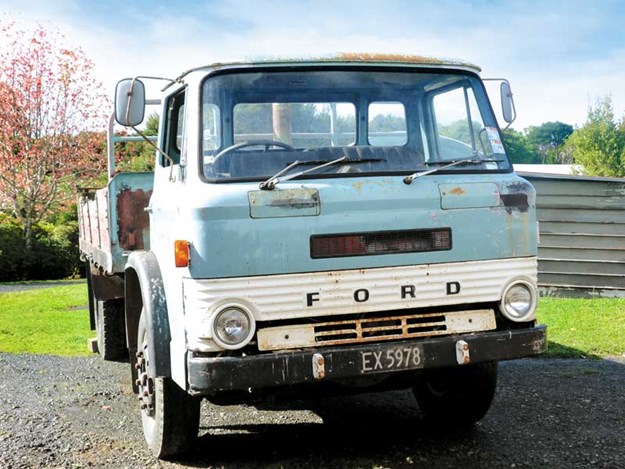 |
|
A good sound restoration base
|
In getting this story off the ground, I guess I should explain that the Ford came into my possession in May 2016—although, it only seems like yesterday—and I’ve had it sitting under cover for the past three years waiting to receive some love and attention.
There are quite a few differences between the two jobs. For a start, the Ford’s registration is currently on hold, whereas when I first started out on the Morris, I didn’t have any registration documentation, save what looked like its original number plates and a receipt from the guy I bought it from in Albury, south of Ashburton.
However, a difference between the two trucks that’s worthy of mention—and perhaps one that doesn’t have any bearing on the length of time the restoration will take—is the distance it had to travel to get it into my storage.
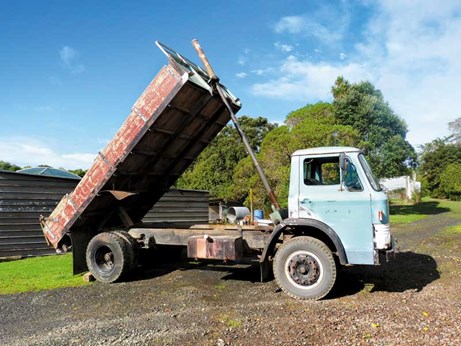 |
|
Tipping body for ease of chassis access
|
The recovery of the Morris and an accompanying parts truck required a round trip of about 2500km on the back of a transporter, whereas the Ford’s journey only consisted of about 25km or approximately one percent of the distance of the South Island excursion.
The reason I mention the collection of both trucks is that the last 10km or so of the Ford’s collection trip wound up being quite taxing on the old truck, but that’ll be a story for later on in the piece.
There are several factors that’ll make the Ford restoration a whole lot easier than the Morris, so I’ve drawn up a comparison to see if the readers agree with my assessment of the expected time, or if you think I’m simply looking at the world through rose-coloured spectacles. It will be interesting to see if I can get this job done by around June next year.
FG K30 Morris
- As I already had a light truck from a previous restoration—a K Bedford—I didn’t need another flat deck, so I was undecided as to what the truck would be re-purposed as (the tow wagon idea only came to me about a year into the restoration). The decision to build the towing rig and body from scratch took up a considerable amount of restoration time
- The subframe of the cab was completely rotted out and needed replacement
- Status of engine was unknown until the cab had come off and was checked out before it was removed for cleaning purposes (fortunately, that outcome was great, as it started and ran well, with some oil down the bores for a few weeks before attempting the start-up)
- Brakes not working, requiring $2k being spent on hydraulics
- Front wings (mudguards) battered and bent, requiting many hours, and, of course, many more dollars
D750 Ford
- Already has operational tipping body with FOB hoist
- Deck sides and operating tailgate came with the deal
- Brakes work, although grabbing, hopefully, a relatively easy-fix
- All lights operational
- Eaton two-speed diff only operates in low range
- No apparent structural rust in cab
- Because of tipping body and tilt cab, access to clean and paint chassis rails, etc. will be fairly simple
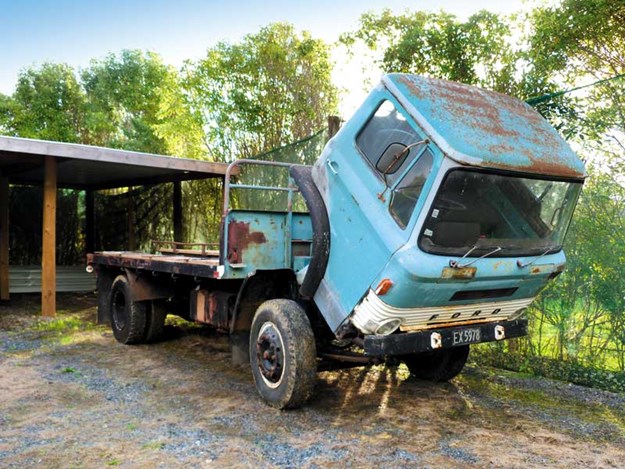 |
|
Tilt cab will ease access to engine, etc.
|
I’m absolutely sure there will be things that I haven’t spotted that need attention; some tyres will possibly have to be replaced after several years of sitting around.
One thing that doesn’t go in favour of the Ford though is its size. Because I don’t have a building that is big enough to work on the truck completely under cover, there will be times when I can’t do painting and other weather-dependent tasks.
That being said, I’m going to stick my neck out and estimate a finish date of June 2020.
I can only hope my ‘vision’ for the finishing date is as good as the calendar date, if you get my drift. But as the Morris restoration proved, I don’t always get it right; it’s estimated time was 30 months and it actually took an additional six.
Getting started
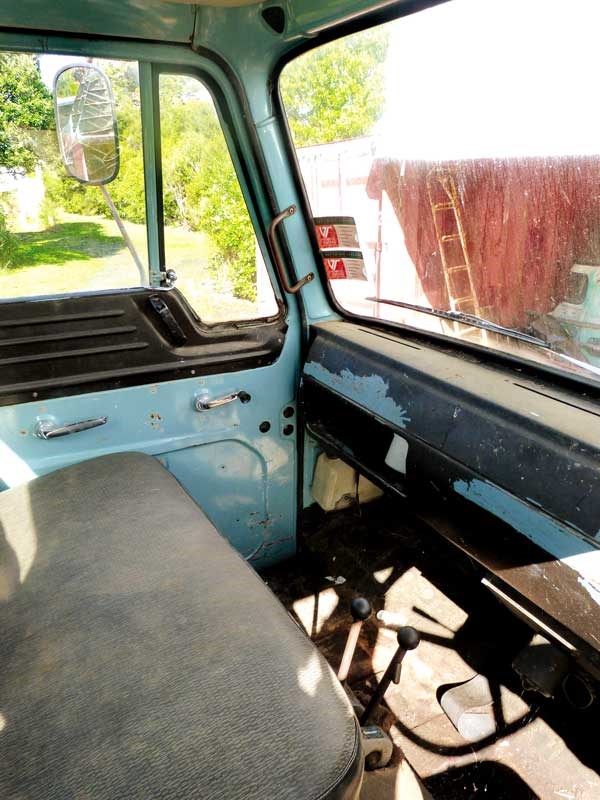 |
|
The interior will need some work
|
As I said earlier, I’ve had the truck now for about three years and the first thing I did was to give it a good-old water blast.
I’ve found that by giving a project an initial clean, you get to see all the bits and pieces that are both good and bad, and you can make a mental note of what might need attention, and also all the things you think you can reasonably get away with minimal amount of work.
Over the past three years, I’ve regularly started the truck and even given it a bit of a tool-around my mate Murray’s large property, just to keep things working a little bit at least.
The previous owner gave me a power steering pump as a spare, along with a couple of new front indicators, all of which I’ll wind up using, as the blinkers do need replacing, which I think will be the case with the power steer pump. I’ve noticed a loss of power steering fluid over time and a weird noise issuing from under the cab when you turn a corner.
 |
|
A spare wheel—story for next month!
|
The thing I like best about starting a new project is making a call on where to make a start.
Will I start from the front and work backwards or the reverse of that process? Perhaps, it will be best to start on one side and complete a circuit.
In this instance, I’d kind of decided that I’d do the same with this truck as I did with the Morris and do the easy stuff first by starting at the back and working forward.
However, it was while I was doing the initial washdown that I noticed the roof of the cab had a fair bit of surface rust that looked like it needed urgent attention, so at that point in time, the fate of the restoration process was sealed.
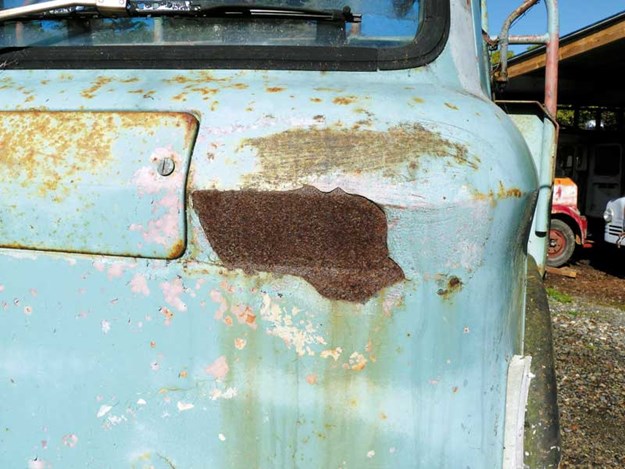 |
|
Will this rust be worse than it looks?
|
A quick sand-down revealed that rust was pretty-much superficial, although, the roof was badly-dented, thus the very first job on our latest restoration was underway.
The sand-down was followed-up with a rustproofing, a coat of primer, and one of finish coat, however, these were applied over the dents, making it a temporary protective measure only until the headlining can come out later on. So here we go, we’re underway with restoration number four.
Tip of the month
Maintain enthusiasm
Coming up...
Hidden surprises—Morris restoration update
Keep up to date in the industry by signing up to Deals on Wheels' free newsletter or liking us on Facebook.


.jpg)




.jpg)









